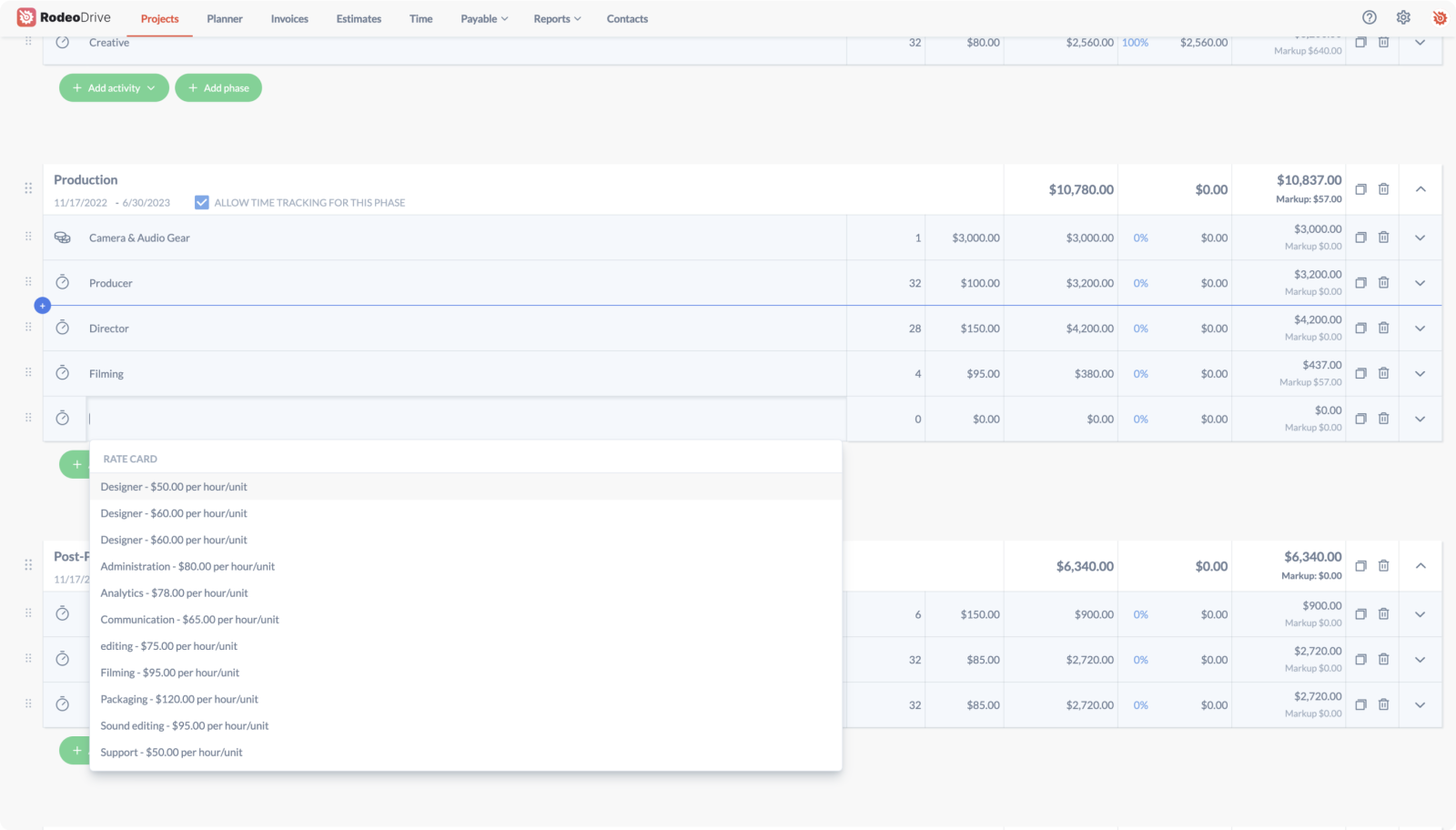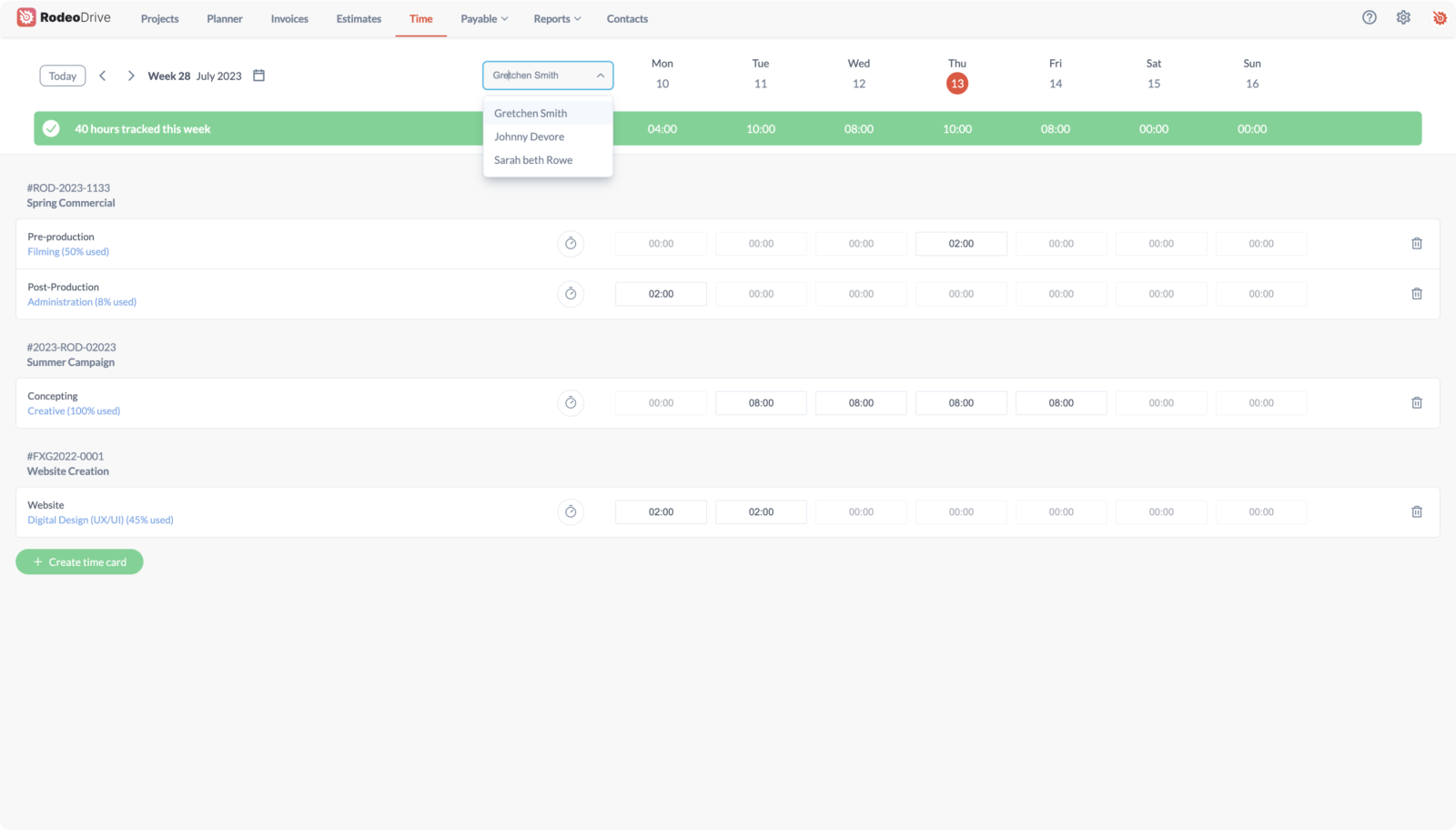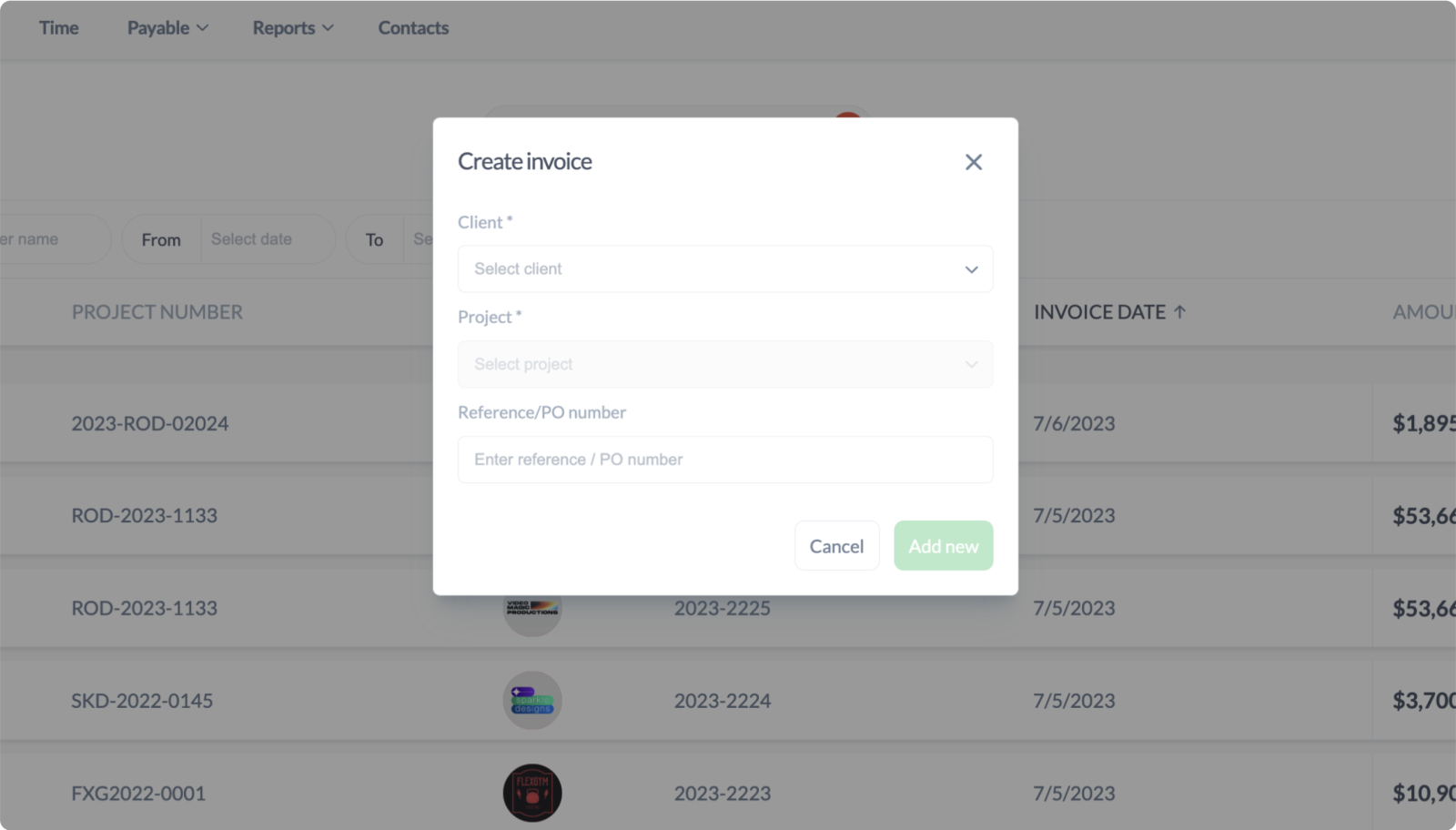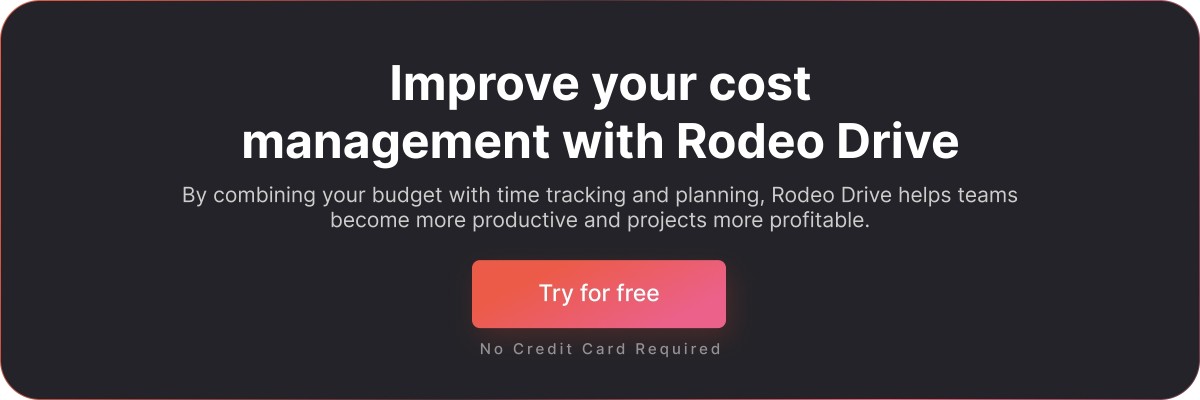Demystifying Project Cost Estimation: A Comprehensive Guide
Project success lies in timely delivery, adherence to scope, and staying within budgetary constraints. Central to this process is project cost estimating — a strategic tool project managers employ to help make informed predictions and decisions.
Yet, cost estimation can often seem complex and packed with uncertainties and potential pitfalls, but it's highly important. According to PMI's 2018 Pulse of the Profession report, 28% of all projects get off-track because of inaccurate cost estimates.
Let’s shed some light on the art and science of project cost estimation and explore the knowledge and tools to confidently navigate this essential aspect of project management.
What is project cost estimation?
Project cost estimation is the process of forecasting and approximating the financial resources required to complete a project successfully. It involves analyzing and evaluating various elements, such as labor, materials, equipment, and any other expenses associated with the project.
What is a project estimate?
A project estimate is a rough guess of how much a project will cost, how long it will take, and what resources it will need to be completed successfully. It's not an exact prediction, but it gives a good idea based on the information and assumptions available at the time.
For project-based businesses, estimates can help explain to clients and stakeholders how much a project will likely cost and can be part of a project proposal.
The actual length of a project can only be known once all the deliverables are finished.
But to create a reasonable estimate, you need to look at similar projects in the past, check for any industry benchmarks, talk to the team members involved, and think about all the unique things that make this project different or tricky.
When the project or project phase is done and dusted, project managers send an invoice based on that estimate and keep the cash flow moving.
Related: Invoicing Clients: 11 Proven Tactics to Help You Get Paid
Why are project cost estimations important in project management?
Project cost management is essential for a successful outcome. This process gives us valuable info about the financial side of the plan. Having accurate cost estimations is key for planning, budgeting, and staying in control. Without a solid grasp of the project's financial needs, it's tough for project managers to allocate resources properly, make cost-effective decisions, and succeed.
- Budget planning: Cost estimations are like the building blocks of budget planning. They help project managers figure out how much they'll need for the project, so they can allocate the proper budget, find funding, and set reasonable financial goals. This way, the project stays financially healthy without going overboard or running out of resources.
- Decision-making: Project managers can see how changes might affect costs and make strategic decisions based on projected expenses.
- Stakeholder communication: Estimations are a good talking piece for the ones involved in the project, like clients, team members, and sponsors. When we lay out the costs clearly and honestly, it helps manage everyone's expectations. This builds trust, keeps misunderstandings to a minimum, and improves teamwork.
- Risk management: Cost estimations help manage risks. They help project managers spot potential financially-related risks and develop contingency plans.
- Performance measurement: Project managers can compare their cost estimations to a benchmark to discover if the project is on track, sticks to the budget, or has any cost differences.

The types of project-related costs
Understanding the different types of costs involved in a project is crucial for accurate cost estimation, effective budget management, and informed decision-making throughout the project lifecycle. Let’s explore the different types of project costs:
Direct and indirect costs
Direct costs and indirect costs are two types of expenses that affect the execution of a project. Let's break down each of them:
Direct costs: These expenses can be attributed to a project activity or work package. Direct costs are directly linked to the production of goods or services. Examples include:
- Labor costs: Wages, salaries, and benefits of project team members directly working on the project.
- Materials and equipment: Costs associated with purchasing or renting materials, supplies, tools, or equipment required for the project.
- Subcontractor costs: Payments made to external vendors or contractors hired to perform specific tasks or provide specialized services for the project.
- Travel expenses: Costs incurred for project-related travel, including transportation, accommodation, meals, and incidentals.
- Licenses and permits: Fees associated with obtaining necessary licenses or permits for the project such as filming locations and event venues.
Indirect Costs: Also known as overhead costs or general expenses, indirect costs are not directly attributable to a specific project. They support the overall project or organization. Indirect costs are typically incurred across multiple projects or departments.
Examples include:
- Administrative expenses: Costs related to project management, office space, utilities, and office supplies.
- Indirect labor costs: Wages, salaries, and benefits of employees who provide support functions to the project but are not directly involved in its execution.
- Overhead expenses: Costs associated with maintaining infrastructure, facilities, and equipment that benefit the project indirectly.
- General company expenses: Costs incurred for corporate activities, such as legal services, insurance, and accounting.
Variable costs
Variable costs are "flexible" expenses. Project managers must consider these costs to determine the total expenses and predict how the project's size or activity changes will affect the finances.
In projects, variable costs change directly to the quantity or volume of a project's output or activity. These costs fluctuate based on the level of project production or the amount of work performed.
Variable costs increase or decrease as the project progresses and can be influenced by factors such as the number of deliverables produced, the amount of labor or materials used, or the level of project activity.
Fixed costs
Fixed costs are like the steady-Eddies of expenses that don't change. They give us a starting point for calculating the project's financial benchmarks. Project managers must keep them in mind when crunching numbers. Some examples of fixed costs are:
- Insurance: The cost of project-specific insurance policies or general liability insurance.
- Depreciation: Costs related to the depreciation of project assets or equipment. Although the value of assets may decrease over time, the depreciation expense is predetermined and fixed.
- Licensing or software fees: Costs associated with acquiring licenses for project-related software or proprietary tools.
Sunk costs
Sunk costs are the expenses you've paid for and can't get back. It's important not to let sunk costs affect your future decisions.
So, when deciding on the project's trajectory, focus on what's ahead instead of what you've spent. What’s already been spent cannot be reversed or recovered, regardless of the project's future outcome or direction.
Pro tip: avoid the sunk cost fallacy: The sunk cost fallacy occurs when decision-makers consider the previously invested resources as a justification to continue investing in a failing project, even if it no longer makes sense.
What are the most common cost-estimating techniques in project management?
To achieve an accurate cost estimate, project managers employ various techniques that consider factors such as project scope, resource requirements, and historical data. These cost-estimating techniques provide valuable insights into the financial aspects of a project and help stakeholders make informed decisions. Let’s dive deeper into some of the most common cost-estimating techniques in project management:
Parametric estimating
Parametric estimation is all about being systematic. Taking into account specific parameters and how they relate to the project's outcomes gives you a more objective and standardized way to make estimates. It's almost a scientific approach to figuring out the project’s progress.
Here's a step-by-step guide on how to do parametric estimating:
- Determine the parameters or variables significantly influencing the task or project's duration, level of effort, or cost. These parameters can include factors such as size, complexity, resources, productivity rates, or any other relevant variables.
- Collect reliable and relevant historical data related to similar projects or tasks. This data should include information about the parameters identified in step one and the actual duration, effort, or cost incurred in those projects.
- Analyze the historical data to identify patterns, trends, or relationships between the parameters and the project outcomes.
- Based on the analysis of historical data, develop mathematical models or formulas that express the relationship between the parameters and the project outcomes (duration, effort, or cost). These models can take different forms, such as linear equations, exponential functions, or other relevant mathematical representations.
- Apply the models: Once the parametric models are developed, apply them to the current project by inputting the values of the identified parameters. This will yield estimates of the project's duration, effort, or cost based on the relationships established in the models.
- Compare the estimates obtained through parametric estimation with other techniques or benchmarks to validate their accuracy.
Pros
Parametric estimating provides a standardized approach to estimation by considering specific parameters and their relationship to project outcomes. By relying on data-driven models and formulas, parametric estimating reduces personal biases and subjective judgment.
Cons
Developing and applying parametric models requires some mathematical expertise and heavily relies on the availability of reliable and relevant historical data. This method shouldn’t be your top pick if you don't have statistics available.
.png)
Bottom-up estimating
Bottom-up estimating takes a granular approach, looking at every little piece before adding it all up to get the total project cost.
This method breaks the project into smaller parts, making it easier to estimate accurately and in detail. Each task or activity gets its assessment, considering what it needs, how long it takes, and how much it costs. It's like building up the estimate from the ground level, taking care of each component individually.
Pros
Bottom-up estimating provides a higher level of accuracy compared to other estimation techniques. By breaking down the project into smaller components and estimating each individually, it considers the specific requirements, resources, and costs associated with each task. This detailed approach helps reduce the potential for overlooking or underestimating project costs.
This way, project managers can better understand the work involved and can identify any potential scope creep or additional requirements, allowing for more accurate planning and setting realistic project expectations.
Cons
Bottom-up estimating may be challenging during the early stages of a project when the details and requirements still need to be fully defined. In such cases, top-down or analogous estimation techniques might be more suitable.
Top-down estimating
In this method, the management team sets the financial goals and vision for the company. They then distribute the available funds to different departments and projects based on these high-level objectives.
Instead of getting lost in the nitty-gritty details, top-down budgeting focuses on the organization's bigger picture and strategic direction.
Pros
Top-down budgeting ensures that financial resources are allocated in alignment with the organization's strategic objectives. It helps prioritize initiatives and projects that contribute to the overall vision of the company.
Cons
In top-down budgeting, department heads and project managers may have limited involvement in the budgeting process. This can lead to a lack of ownership and commitment amongst team members who execute the deliverables.
Also read: Bottom-Up vs. Top-Down Project Budgeting: Which Approach Is Better?
Three-point estimating
When estimating task durations or efforts, three values come into play: the optimistic estimate (O), the most likely estimate (M), and the pessimistic estimate (P). These three estimates cover a range of possibilities for how long or how much effort a task might take.
The optimistic estimate (O) represents the best-case scenario, assuming everything goes smoothly without any unexpected hiccups or delays. It's like dreaming of everything going perfectly.
The most likely estimate (M) is a realistic estimate based on past experiences or expert judgment. It's what we expect to happen based on our knowledge and understanding of the task.
The pessimistic estimate (P) takes into account the worst-case scenario. It considers potential obstacles, delays, or unexpected challenges that might come up during the task. It's like preparing for the worst, just in case.
One popular method is to calculate a weighted average using these three estimates, giving more weight to the most likely estimate. This average is often represented by the formula: E = (O + 4M + P) / 6. It helps create a balanced estimate that considers both the best and worst possibilities while being grounded in what we really expect to happen.
Pros
Three-point estimation captures a range of possibilities for task durations or efforts, considering both optimistic and pessimistic scenarios. This provides a more comprehensive view of the potential outcomes and helps manage uncertainties. Plus, the pessimistic estimate in three-point estimation accounts for potential risks, challenges, and delays.
Cons
While three-point estimation offers a range of possibilities, it may lack precision or accuracy in predicting the exact outcome of a task. It is an approximation that considers uncertainties but does not guarantee pinpoint accuracy.
Expert judgment estimating
To gather expert judgment, the estimation team or project manager can go about it in different ways. They can conduct interviews, send out surveys, organize workshops, or review historical data and lessons learned from past projects. The experts can be consultants, internal team members, or other professionals with expertise relevant to the project.
Pros
Experts can better understand the project's unique requirements, challenges, and industry-specific factors. Their judgment can help incorporate important nuances and contextual factors that may impact the estimation process.
Cons
Expert judgment estimation is often qualitative in nature, lacking specific, quantifiable metrics or data points. This can make it challenging to compare or validate estimations against objective benchmarks.

Analogous estimating
Analogous or historical estimating is learning from the past to estimate for the future. In this technique, project managers draw on their previous experiences with similar projects to estimate the cost and duration of a new undertaking. By using the knowledge and insights gained from past projects, they can develop estimates for new projects that have similar scopes.
One popular approach in historical estimating is to take the budget framework from a previous project that closely matches the scope of the new project. This saves time and effort since it builds upon existing knowledge and avoids starting from scratch. It's like recycling what worked before and adapting it to the current project.
Pros
Analogous estimating can save time in the estimation process by leveraging existing knowledge and data from similar past projects. It eliminates the need to start from scratch and can provide quick estimates based on historical information.
Cons
Analogous estimating assumes that the scope and characteristics of past projects align closely with the current project. However, the estimates won't be as accurate if there are significant variations in scope.
Mistakes to avoid when estimating project cost
When estimating project costs, it's important to be mindful of potential mistakes that can lead to inaccurate or unrealistic estimations. By being aware of these common mistakes and taking proactive measures to address them, you can improve the accuracy and reliability of your project cost estimates. This will improve financial planning, resource allocation, and decision-making throughout the project lifecycle. Here are some common mistakes to avoid when estimating project costs:
- Overlooking scope creep or scope changes: Failing to consider potential changes or additions to the project scope can lead to underestimating the costs. Be diligent in assessing all project requirements and carefully evaluate any scope changes to adjust the cost estimates accordingly.
- Ignoring historical data: Neglecting to analyze historical data from similar projects can result in inaccurate cost estimations. Historical data provides valuable insights into past project costs, allowing you to make more informed estimates based on actual experience.
- Underestimating resource needs: Inadequate consideration of resource requirements, such as labor, materials, and equipment, can lead to cost underestimation. Ensure you thoroughly assess each project task's resource needs and factor in any potential variations or contingencies.
- Neglecting contingency planning: 55% of project managers blame budget overruns as a reason for project failure. Failing to allocate contingency reserves to account for unforeseen events or risks can leave the project vulnerable to cost overruns. It's crucial to include a reasonable contingency buffer in your cost estimates to mitigate potential risks and uncertainties.
- Unawareness of project risks: Optimistic assumptions or downplaying potential risks can result in significant cost discrepancies. It's essential to realistically assess risks, uncertainties, and potential cost impacts to develop more accurate cost estimates.
- Lack of documentation: Keeping clear records of cost estimation assumptions, methodologies, and supporting data is crucial. Lack of documentation and transparency can make it difficult to justify cost estimates and hinder effective communication with stakeholders.
Managing project costs with Rodeo Drive
Rodeo Drive simplifies creating client-ready estimates from your project budgets, saving you time in getting client approval on your budget.
Designed with user-friendliness in mind, Rodeo Drive streamlines the financial side of project management with easier estimating and invoicing, allowing you to stay organized and work more efficiently. It's a powerful tool that can help you juggle multiple complex projects and clients at once, helping you increase your company's profitability.
With its intuitive design and robust features, Rodeo Drive is an ideal choice for project managers seeking a hassle-free solution. Plus, instead of offering complicated pricing plans that charge you by feature set, users can access all of Rodeo Drive's features for a flat fee of $14.99 per user/month. We also offer a Free plan with more limited feature offerings.
Accurate budgeting in phases
Rodeo Drive helps you build budgets in a phased approach, ensuring accuracy and control every step of the way.
Here's how it works: You break down your projects into stages, estimating the time and activity expenses associated with each phase before your project even starts. Rodeo Drive takes care of the calculations and generates the total estimated cost, giving you a complete budget.

But here's the best part: Rodeo Drive's features are all interconnected. That means as you track and spend on time activities and tasks, your budget updates in real-time. So you always have a clear picture of where your budget is going and can make informed decisions to stay on track.
Analogous budgeting is made easy with Rodeo Drive. Instead of starting from scratch every time, you can simply copy the budget framework from a previous project. Rodeo Drive makes it easy to duplicate the budget structure, including the team members involved as well as the budget framework. It's like having a ready-made template that you can adapt to fit your new project's needs.
Effortless time tracking that reflects on your budget
As your team logs their time and project costs, Rodeo Drive keeps your project budget updated in real time. This means you'll always have an accurate and up-to-date view of your spending.

Hassle-free estimates and invoices
Making sure your invoices are accurate and hassle-free is just as important as getting your project estimates right. With Rodeo Drive, there's no need to start from scratch when creating invoices. We take the data from your logged hours and project finances and generate invoices for you, all ready to be sent to your client. It's a convenient and efficient way to ensure your invoicing is on point and saves you time and effort.

Additional features
- Plan and assign tasks with ease
- Access reports on metrics like project profitability, employee productivity, time registration, and more
- Contact management: Keep all your client and vendor information in one place.
- Expenses & Purchase Orders: Track project expenses efficiently with your POs.
- Multilanguage: You can easily switch languages in Rodeo Drive by selecting Dutch, English, or German under ‘Preferred language.’
- Our integration with QuickBooks (US) and Xero (UK) helps you with bookkeeping and billing.
Ready to get started with your project cost estimate? Schedule a demo to learn more about Rodeo Drive or sign up for free today.








